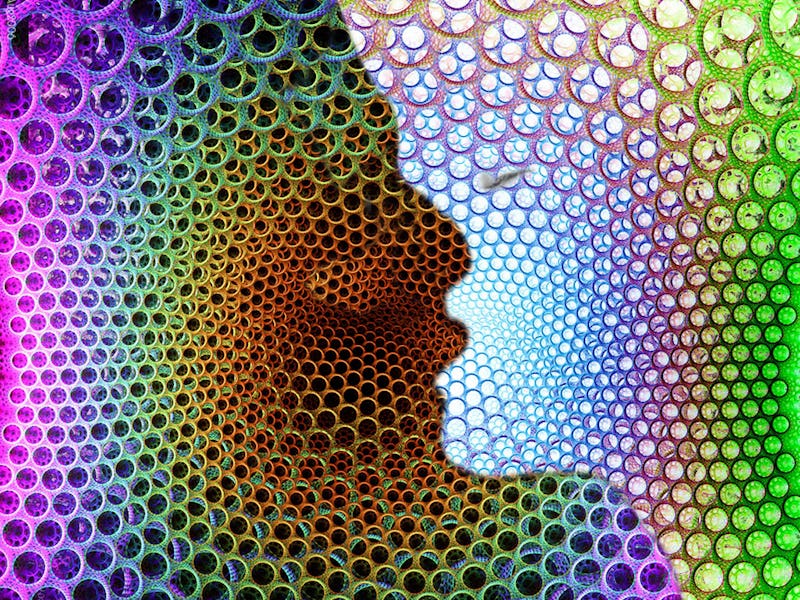What Went Wrong When a Psychiatrist Self-Medicated With DMT
A little bit goes a long way.

In this era of brain augmentation, nootropics, microdosing, and alternative medicine, it might seem tempting to take your mental health concerns into your own hands. But a case report about a man who tried to DIY mental health treatment with DMT, published in the Journal of Psychoactive Drugs on July 7, might convince you to exercise caution when it comes to experimenting with psychotropic drugs.
This cautionary tale involves a former psychiatrist who tried to treat his treatment-resistant bipolar depression with the powerful psychedelic N,N-Dimethyltryptamine — better known as DMT — with dire results.
The unnamed patient, a 40-year-old retired psychiatrist, had lived with depression for most of his life and had experienced a manic episode. As such, he was diagnosed with bipolar I disorder. He hadn’t responded to multiple antidepressant medications, mood stabilizers, various antipsychotics, electroconvulsive therapy, or ketamine.
In an effort to ease his depression, the man tried taking DMT that he purchased on the dark web.
Crystalline DMT is typically vaporized in small amounts (2-60 milligrams) out of a glass bulb-style pipe.
But he didn’t just use a little DMT. By any reasonable standard, he used a lot: He told doctors that he was vaporizing up to one gram of the drug each day. According to the DMT guide published by Erowid, a prominent harm-reduction resource, 2-5 milligrams is considered a threshold dose (effects are just barely noticeable), whereas 40-60 milligrams is considered a heavy dose (in which the user hallucinates intensely and totally detaches from reality). The retired psychiatrist was consuming 1,000 milligrams every single day, which is a heck of a lot.
After doing this for about six months, he did experience some relief from his depression.
Once he started seeing some benefits in his mood, he added a monoamine oxidase inhibitor (MAOI) called phenelzine to his drug regimen, which he also purchased on the dark web. This atypical antidepressant potentiates DMT — makes its effects stronger and longer-lasting — by inhibiting the enzyme that breaks down DMT in a person’s body. Phenelzine has a similar effect to the traditional brew known as ayahuasca, which combines an MAOI-containing plant (Banisteriopsis caapi) with a DMT-containing plant (usually Psychotria viridis) in order to potentiate the effects of the DMT.
To help him get to sleep, he was taking 4-6 milligrams of clonazepam, a benzodiazepine typically prescribed for anxiety.
Ayahuasca, like the psychiatrist's pharmaceutical regimen, contains DMT and a monoamine oxidase inhibitor.
When the psychiatrist stopped taking these three drugs because he had to travel on an airplane and he didn’t want to smuggle them along, his self-treatment regimen backfired. A few days later, he was hospitalized “with altered mental status,” according to the report.
“On arrival, the patient was nonverbal, combative, and required six security guards to restrain him. When less restrictive measures failed, he was given propofol 1,000 mg IV, ketamine 500 mg IM, midazolam 5 mg IV, diazepam 20 mg IV, and fentanyl 4 mg IV with minimal effect,” wrote the authors of the report.
He then had a seizure and had to be intubated. The report goes on:
Psychiatry was consulted after the patient’s delirium resolved and he was medically stabilized as he exhibited symptoms of mania and psychosis. He was pressured in his speech, hyperreligious, and delusional. He believed that demons were leeching into his soul and asked the medical staff for an exorcism. It was recommended that the patient be admitted to the behavioral health unit for mood stabilization.
The patient was prescribed lithium and clonazepam for his mania and paliperidone for his psychosis, and he left the hospital against medical advice. The doctors report that his condition is unknown.
Scientists know a decent amount about DMT, including its potential efficacy for treating addiction and depression, but it’s not completely clear how responsible it was for his psychosis. Using psychedelics can often exacerbate preexisting mental illness, but they don’t appear to cause mental illness.
A possible explanation for his erratic behavior could be his sudden cessation of clonazepam, which is known to be associated with psychosis. Regardless of which parts of this psychiatrist’s polypharmacy and self-medication routine were responsible for his traumatic experience, it’s always important to consult with your doctor or therapist before embarking on a treatment plan — especially if it involves DMT.
Abstract: N,N-dimethyltryptamine (DMT) is a psychoactive substance that has been gaining popularity in therapeutic and recreational use. This is a case of a physician who chronically took DMT augmented with phenelzine in an attempt to self-medicate refractory bipolar depression. His presentation of altered mental status, mania, and psychosis is examined in regards to his DMT use. This case discusses DMT, the possible uses of DMT, and the theorized mechanism of DMT in psychosis and treatment of depression, particularly involving its agonist activity at 5-HT1A, 5-HT2A, and 5-HT2C. It is also important to recognize the dangers of self-medication, particularly amongst physicians.